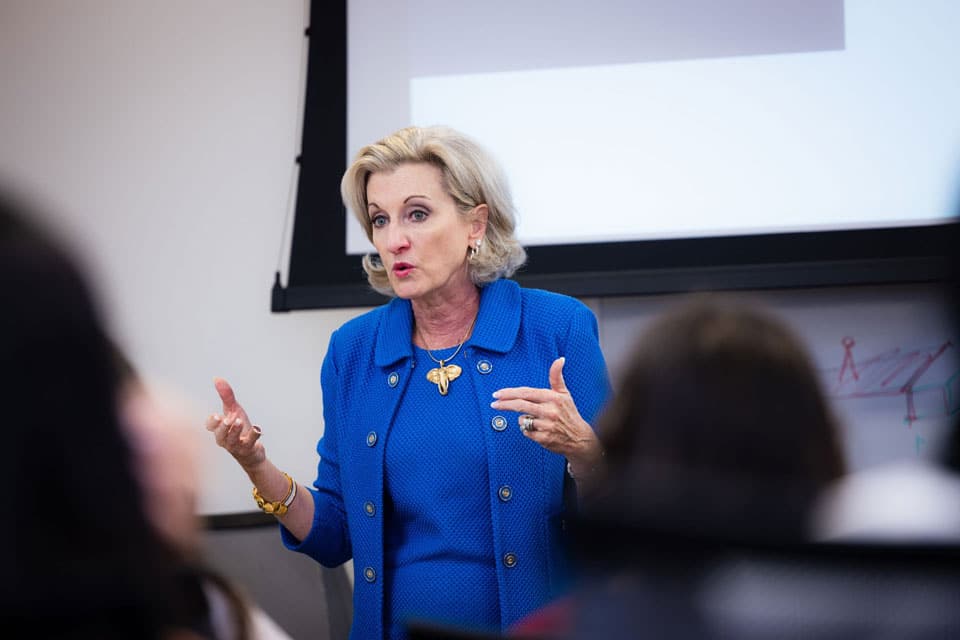Making Government More Like Amazon Through Estonia’s Blueprint

As another potential government shutdown looms over Washington, the need for a more efficient and resilient government becomes increasingly evident. The ongoing political turmoil underscores the importance of reducing the burden on taxpayers and businesses who suffer the consequences of these shutdowns. To address these issues, we must look to innovative solutions, such as those exemplified by Estonia, and consider how they can be applied on a larger scale.
Estonia’s remarkable success in achieving a 99% digital government serves as a beacon of hope. Their approach, which prioritizes citizens and leverages AI and technology, can be seen as a blueprint for transforming democratic governments worldwide. Estonia’s digital governance model is centered around simplicity and proactive service delivery. Rather than forcing citizens to wade through bureaucracy, it anticipates their needs and provides services accordingly, placing data security and privacy at the forefront.
One of the key takeaways from Estonia’s experience is the decentralization of data control. Citizens own their data, allowing them to provide permissions and monitor access. This ensures that the government serves as a facilitator rather than a gatekeeper. Moreover, Estonia’s strong focus on cybersecurity demonstrates that a digital government can remain resilient and secure despite cyber threats.
To apply these principles to a country as vast and complex as the United States, it’s essential to recognize the opportunities that lie ahead.
Let’s begin by addressing some of the bureaucratic hurdles that can be streamlined. The United States can draw valuable lessons from Estonia’s success and reevaluate how it handles government grants and proposal requests. Simplifying and centralizing this process can result in more efficient allocation of funds, less redundancy, and enhanced accountability. By assessing the number of similar research initiatives funded across various government agencies, we can decrease politically driven bias and focus financial resources on crucial areas that have opportunities to have the most significant impact.
Furthermore, incorporating user-friendly interfaces into the multitude of tax registrations and filings at both federal and state levels would revolutionize the experience for all, from gig economy workers to large corporations.
Consider the time-consuming and often frustrating tasks that necessitate long phone calls or in-person visits to government offices. Simplifying processes for acquiring business licenses, navigating Medicaid, applying for green cards, or managing student loans would significantly ease the burden on citizens.
And finally, addressing concerns about waste, fraud, and abuse is paramount. By embracing technology and data-driven solutions, we can enhance oversight and ensure that taxpayer dollars are utilized effectively, alleviating concerns from all sides of the political spectrum.
Finding the right balance between data collection and protection is a universal challenge. Estonia’s approach of respecting individual data ownership while harnessing it for decision-making can serve as a model for governments worldwide. This balance safeguards privacy and empowers data-driven governance at a much-reduced cost of time and money.
In conclusion, Estonia’s journey toward a small government and efficient digitalization exemplifies what is possible with the right vision and technological infrastructure. While the scale of the United States may differ vastly, the principles and lessons learned from Estonia’s success are invaluable.
The question is not whether it can be done but whether there is the will to embark on this transformative journey toward a more citizen-centric, efficient, and digitally-driven government.
As we face today’s challenges and tomorrow’s uncertainties, the path to a better future for all citizens lies in embracing the innovations that have already transformed how Estonia governs its small but forward-thinking nation.
Written by Lisa Gable.
Have you read?
Report: These Are The Most Eaten Foods in the World, 2023.
Most expensive cars in the world, 2023.
These Are the Richest Cities in the World, 2023.
Richest Professional Football Clubs In The World, 2023.
25 of the world’s oldest billionaires in 2023, ranked.
Add CEOWORLD magazine to your Google News feed.
Follow CEOWORLD magazine headlines on: Google News, LinkedIn, Twitter, and Facebook.
This report/news/ranking/statistics has been prepared only for general guidance on matters of interest and does not constitute professional advice. You should not act upon the information contained in this publication without obtaining specific professional advice. No representation or warranty (express or implied) is given as to the accuracy or completeness of the information contained in this publication, and, to the extent permitted by law, CEOWORLD magazine does not accept or assume any liability, responsibility or duty of care for any consequences of you or anyone else acting, or refraining to act, in reliance on the information contained in this publication or for any decision based on it.
Copyright 2024 The CEOWORLD magazine. All rights reserved. This material (and any extract from it) must not be copied, redistributed or placed on any website, without CEOWORLD magazine' prior written consent. For media queries, please contact: info@ceoworld.biz
SUBSCRIBE NEWSLETTER








